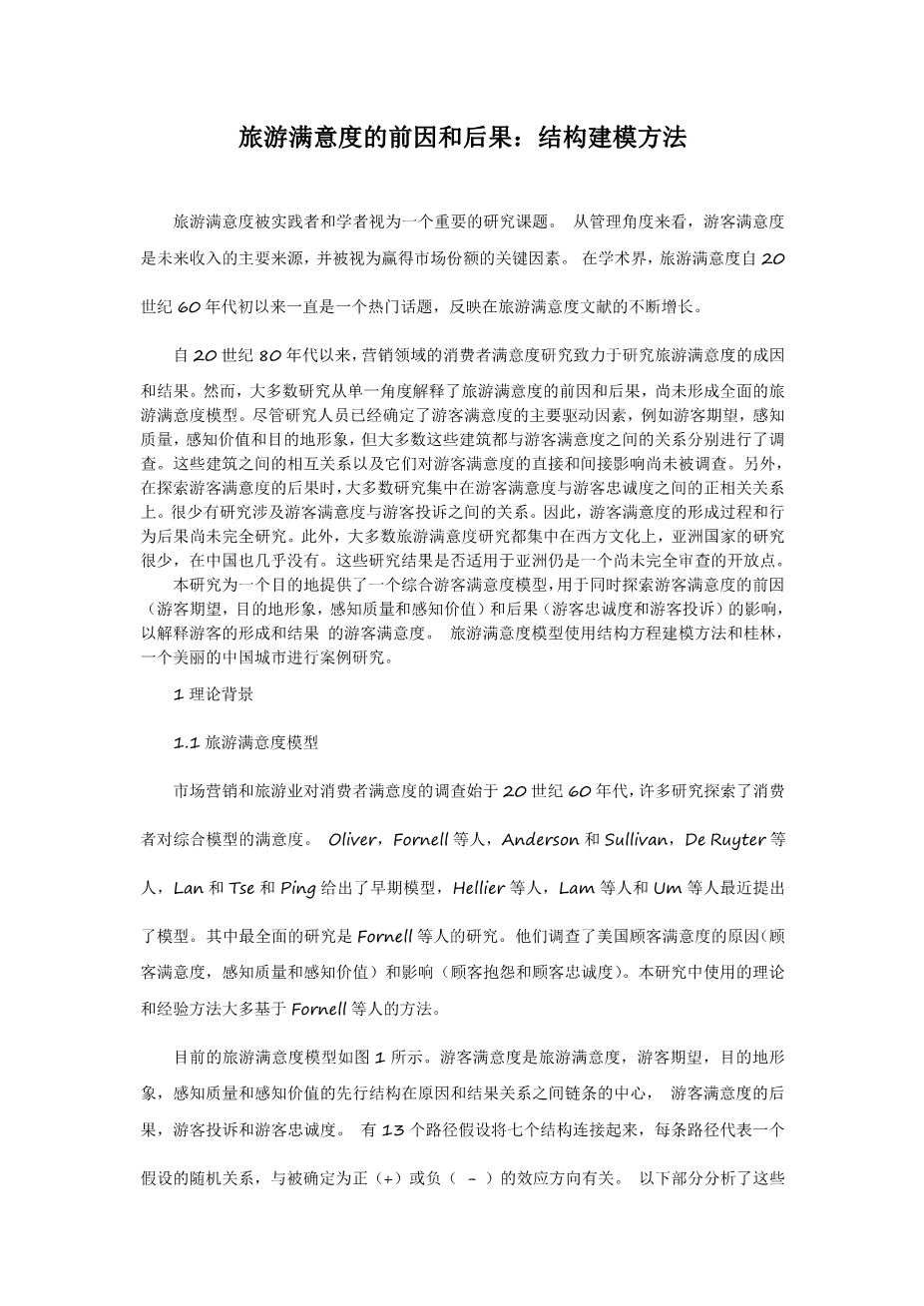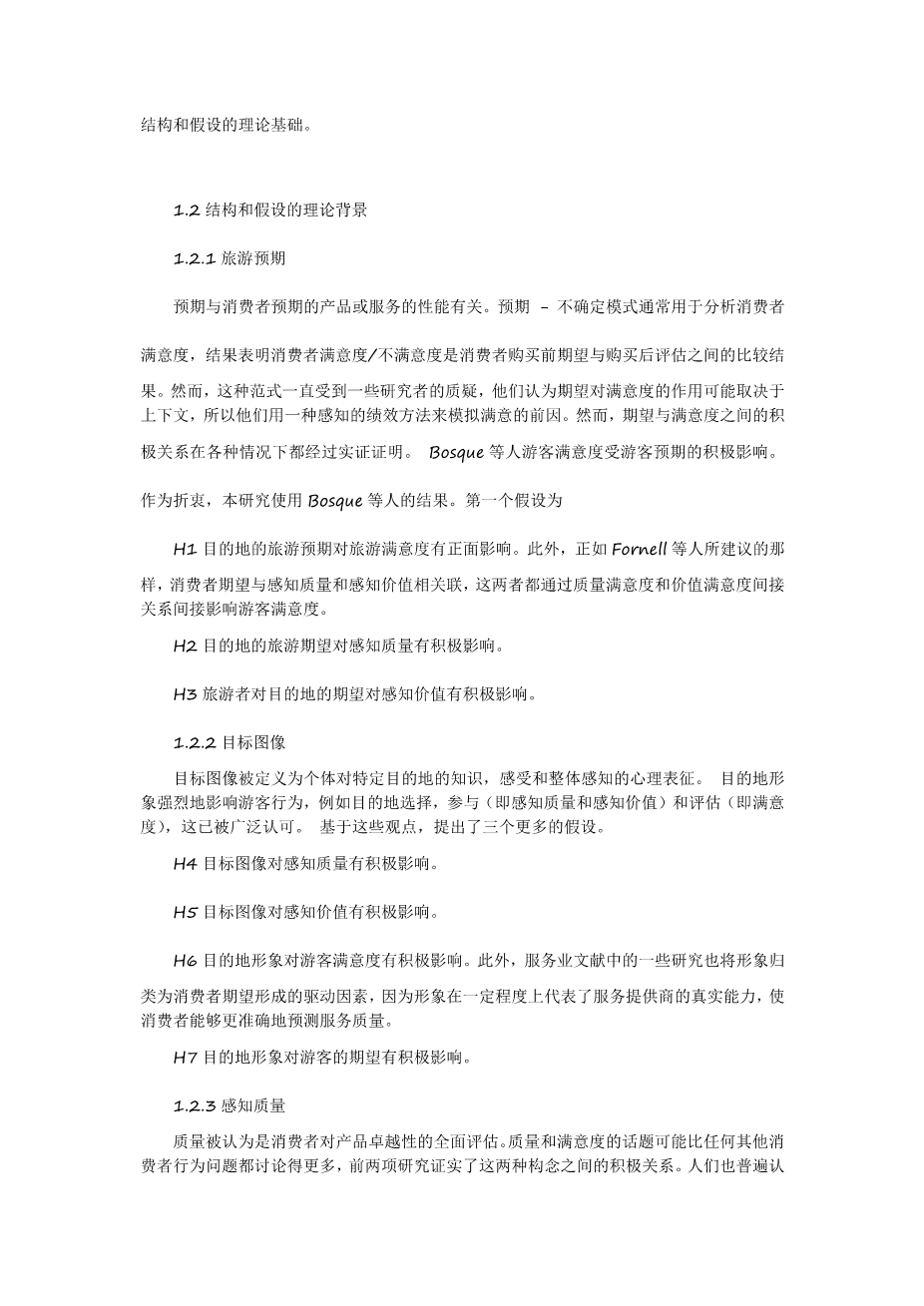Examining Antecedents and Consequences of Tourist Satisfaction: A Structural Modeling Approach
Tourist satisfaction is viewed as an important research topic by both practitioners and academics. From a managerial point of view, tourist satisfaction is the primary source of future revenue and is regarded as the key factor in winning market share. In academia, tourist satisfaction has been a popular topic since the early 1960s, reflected by the constant growth of literature on tourist satisfaction.
Since the 1980s, consumer satisfaction research in marketing has led to efforts to examine the causes and results of tourist satisfaction. However, most of these studies explained antecedents and consequences of tourism satisfaction from a single perspective, with no comprehensive model of tourist satisfaction yet developed. Although researchers have identified major driving factors of tourist satisfaction such as tourist expectations, perceived quality, perceived value, and destination image, most of these constructs were investigated separately with respect to their relationships with tourist satisfaction. The interrelationships among these constructs as well as their direct and indirect effects on tourist satisfaction have not yet been investigated. In addition, when exploring consequences of tourist satisfaction, most research has focused on the positive association between tourist satisfaction and tourist loyalty. Few studies have addressed the relationship between tourist satisfaction and tourist complaints. Therefore, the formation process and behavior consequence of tourist satisfaction have not yet been fully examined. In addition, most tourist satisfaction studies have focused on western cultures, with few studies in Asian countries and almost none in China. Whether or not these findings apply in Asia is still an open point that has yet to be fully examined.
This study presents an integrated tourist satisfaction model for one destination for simultaneously exploring the effects of antecedents (tourist expectations, destination image, perceived quality, and perceived value) and consequences (tourist loyalty and tourist complaints) of tourist satisfaction to explain the formation and results of tourist satisfaction. The tourist satisfaction model is evaluated using the structural equation modeling approach and Guilin, a beautiful Chinese city for a case study.
1 Theoretical Background
1.1 Tourist satisfaction model
The investigation of consumer satisfaction in marketing and tourism began in the 1960s with many studies exploring consumer satisfaction with integrated models. Early models were given by Oliver, Fornell et al., Anderson and Sullivan, De Ruyter et al., Lan and Tse and Ping, with more recent ones by Hellier et al., Lam et al., and Um et al. One of the most comprehensive studies is that of Fornell et al. who investigated the causes (customer satisfaction, perceived quality, and perceived value) and effects (customer complaints and customer loyalty) of customer satisfaction in the U.S. The theoretical and empirical methods used in this study are mostly based on those of Fornell et al.
The present tourist satisfaction model is shown in Fig. 1. The tourist satisfaction is the center of a chain between the cause and result relationships running from the antecedent constructs of tourist satisfaction, tourist expectations, destination image, perceived quality, and perceived value, to the consequences of tourist satisfaction, tourist complaints, and tourist loyalty. There are 13 path hypotheses connecting the seven constructs with each path representing a hypothesized casual relationship with the direction of the effect identified as either positive ( ) or negative (−). The theoretical underpinning of these constructs and hypotheses is analyzed in the following sections.
1.2 Theoretical background of constructs and hypotheses
1.2.1 Tourist expectations
Expectations are related to the performance of a product or service as anticipated by the consumers. The expectation-disconfirmation paradigm has often been used to analyze consumer satisfaction, with the results suggesting that consumer satisfaction/ dissatisfaction is a result of a comparison between a consumer’s pre-purchase expectations and their post-purchase evaluation. However, this paradigm has been questioned by some researchers who argued that the role of expectations on satisfaction may depend on the context, so they used a perceived performance approach to model the antecedents of satisfaction. However, the positive relationship between expectations and satisfaction has been empirically proven in various contexts. Bosque et al. demonstrated that tourist satisfaction was positively affected by tourist expectations. As a compromise, this study uses the result of Bosque et al. with the first hypothesis as
H1 Tourist expectations for a destination have a positive effect on tourist satisfaction. In addition, as suggested by Fornell et al., consumer expectations are associated with perceived quality and perceived value which both affect tourist satisfaction indirectly through quality-satisfaction and value-satisfaction linkages.
H2 Tourist expectations for a destination have a positive effect on perceived quality. H3 Tourist expectations for a destination have a positive effect on perceived value.
1.2.2 Destination image
The destination image is defined as an individual’s mental representation of the knowledge, feelings, and overall perception of a particular destination. It has been widely acknowledged that destination image strongly affects tourist behavior such as destination choice, participation (i.e., perceived quality and perceived value), and evaluation (i.e., satisfaction). Based on theses perspectives, three more hypotheses are proposed.
H4 Destination image has a positive effect on percei
剩余内容已隐藏,支付完成后下载完整资料


英语译文共 3 页,剩余内容已隐藏,支付完成后下载完整资料
资料编号:[468937],资料为PDF文档或Word文档,PDF文档可免费转换为Word
您可能感兴趣的文章
- COVID-19时期的旅游业和可持续发展:以西班牙为例外文翻译资料
- 农民相对剥夺感对乡村旅游可持续发展的影响机制外文翻译资料
- 校园大学生的旅行行为——以亚洲某乡村大学为例外文翻译资料
- 内容旅游与地方社区响应:鹫宫的“幸运之星”和“协作动漫旅游”外文翻译资料
- 基于符号互动理论的遗产旅游资源开发与重塑——以良渚古城遗址为例外文翻译资料
- 在TikTok上映射互联网名人:探索注意力、经济和可见性劳动力外文翻译资料
- 基于社区游客视角的环境责任行为的概念和度量外文翻译资料
- 温泉小镇的再造:维希的独特案例——副标题外文翻译资料
- 基于IP理念的桐乡丰子恺文化旅游开发研究外文翻译资料
- 特殊事件对旅游业的影响及其应对措施研究——新冠肺炎疫情对全球旅游业的影响及其应对措施外文翻译资料


